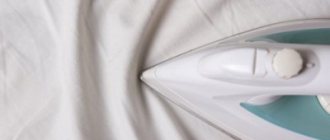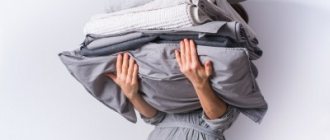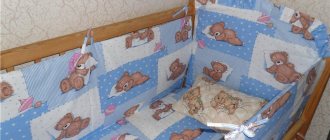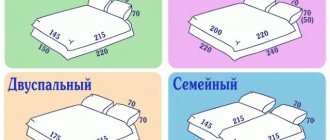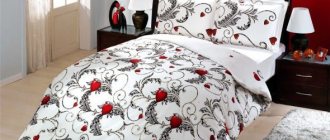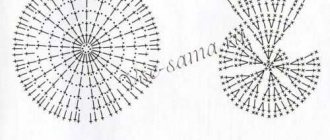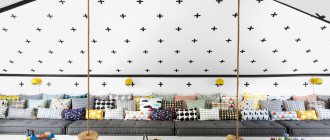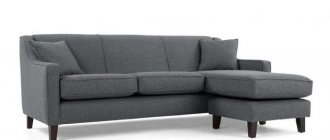A wide range of various household appliances has reduced the manual labor of women in the house to a minimum - the machines prepare food themselves, just throw all the ingredients into a bowl, wash, and vacuum. However, ironing, even with the best iron, still remains a chore that most housewives cannot stand. To reduce the load in this regard, manufacturers produce bedding from fabrics that do not lend themselves to wrinkles. This article will help you determine what material bedding that does not require ironing is made from.
Mahra
Very soft, body-friendly warm fabric with high pile made from elongated loops. The pile can be single-sided or double-sided, varies in length and density, but in any case it provides a light massage effect. Terry linen is available with or without a relief pattern, and sometimes with cut pile.
To make beds, natural fibers are used - cotton, bamboo or linen, which are environmentally friendly, vapor permeable, absorb water well and remove it quickly, and regulate temperature. All this provides a comfortable microclimate for the human body.
After use and washing, the pile is a little crushed, but quickly straightens out. It is not recommended to iron terry products.
Continue stroking or join the Europeans?
Don't look for a definitive answer to this question. Each woman gives it independently.
If you can't feel comfortable until you've ironed all your sheets and duvet covers, iron them!
But if you feel that you can’t fall asleep for a long time, that you can’t completely relax and unwind, pay attention to your bed. Perhaps there is a ban on ironing on the laundry label? In this case, either stop ironing or change the set.
And, of course, if you don’t have time to iron everything out, don’t feel remorse! European women don't iron, Canadian women don't iron, and you can too!
What is alpaca yarn
Knitted merino wool hat
Percale
A smooth natural fabric made from untwisted cotton threads, which are coated with a special glue during the production process. The finished fabric is very dense, smooth, durable and wear-resistant, while being soft and light.
Percale bed linen is hygroscopic, does not cause allergies, retains heat well, is very beautiful and elegant, and belongs to the luxury class. During use and washing, the products practically do not wrinkle and perfectly retain the brightness of the color and do not lose their shape.
Why can't you iron your bed? Answer from scientists?
Experts say that after ironing, the fabric becomes excessively dense, which prevents air from penetrating to the skin and loses its ability to absorb moisture during sleep (who among us has never sweated at night?), which has a bad effect on people’s well-being.
Interesting materials:
How to switch to UTII after registering an individual entrepreneur? How to view sick leave electronically? How to view electronic sick leave data? How to see the date of registration in Tik Tok? How to view your browser history for a year? How to view history on a tablet? How can I see which devices are connected to Google? How to view an office license? How can I view my utility bills? How to watch a replay of a battle in War Thunder?
Polycotton
Fabric combining cotton and polyester threads. The combination of natural and artificial fibers can occur at the stage of creating the thread, then the material will look the same from the front and back sides, as well as at the weaving stage - here the front part will be made of cotton, the back part will be made of synthetics.
The performance properties of polycotton directly depend on the percentage composition of the fabric; acceptable options are ratios of 65 to 35% or 50 to 50%, respectively, of cotton and polyester. Such bedding will be durable, hygroscopic and vapor permeable. The products do not accumulate static electricity, do not shrink, do not deform, retain their original appearance for a long time and almost do not wrinkle, so ironing is not required.
Reaper
Among the list of wrinkle-resistant fabrics, one cannot fail to mention a material that is also not afraid of folds, because the fabric is already a crumpled fabric. We are talking about a reaper. This is an original fabric that retains its interesting appearance after washing, drying, and when stored flat for a long time. The header is not ironed.
The material is made from a variety of fibers:
- wool;
- silk;
- cotton;
- synthetics.
In fact, a reaper is a type of textile decoration. To achieve a crumpled effect, the finished fabric is folded and twisted, and then the material is heat treated and pressed. The result is persistent creases and wrinkles that do not smooth out under the weight of the fabric. Most often, tightly twisted fibers are used to create the material.
The following types of headers are distinguished:
- natural fabric;
- artificial (viscose);
- synthetic;
- mixed.
Dresses, shirts, blouses, skirts, and bed linen are sewn from the reaper. The material is not capricious, it does not need to be ironed, but is washed according to the information on the label, because the composition of the fabric varies and each specific product requires an individual approach.
Poplin
Thin, but very dense, pleasant to the touch material. It is made by ordinary plain weaving, but from threads of different thicknesses - the weft is 2 times thicker than the warp, as a result of which a scar is formed on the surface of the fabric, due to which the pattern is made.
The composition of poplin varies - it can be natural cotton, either alone or with a small addition of synthetics, which significantly reduces the cost of the fabric, as well as a combination of silk and wool - poplin bed linen belongs to the premium class.
In any case, products made from poplin are wear-resistant, do not fade, do not shrink, do not wrinkle, regulate body temperature, perfectly absorb moisture and allow air to pass through. The material is very strong, wear-resistant, durable.
Is heat treatment necessary?
First of all, bed linen is ironed to give it aesthetic appeal, because it is more pleasant to sleep on neatly ironed sheets. Also, under the influence of the high temperature of the iron, all microbes die ; when washing, this effect cannot be achieved.
Pathogenic microorganisms do not grow in all materials. If the fabric contains synthetic fibers, microbes cannot settle in them, which means that temperature treatment of accessories is not necessary.
Flannel
Warm, soft and cozy cotton fabric, covered with soft pile on one or both sides. Flannel bedding is highly breathable and absorbs moisture, is hypoallergenic, does not accumulate static electricity, and does not require ironing. The disadvantage is that they take a long time to dry.
The Ellina online store offers bed linen from a wide variety of fabrics, including wrinkle-resistant ones. The assortment with photos and descriptions is presented in the catalog. The quality of goods and prices will pleasantly surprise the buyer. Delivery throughout the Russian Federation is provided. Consultations are provided by telephone.
Where and for how much can I buy it?
You can purchase bed linen that does not need to be ironed at almost any home improvement store or large hypermarket. You can order online without any problems.
Among the manufacturers note:
- "Comfort-Textiles".
- "ArtDesign".
- KPB Terry Kartex.
- GOLDTEX.
- .
- TC "Terra".
The estimated cost depending on the fabric is presented in the table:
| Material | Price |
| Percale | From 1500r |
| Poplin | From 1500 rub. |
| Mahra | From 2500 rub. |
| Crinkled silk | From 3000 rub. |
Reasons to wash new bedding
Experts explain to consumers why this procedure is strongly recommended:
- Once manufactured, most bedding sets go through the process of being packaged in polyethylene bags, which are not airtight. Even if the integrity of the package is not in doubt upon purchase, there is a possibility of bacteria and allergens getting on the fabric. They can cause significant harm to the body.
- If you thoughtlessly lay out a set of natural fibers immediately after purchase, you run the risk of ending up in the same bed as dust mites. Their size is very small; it is unlikely that parasites will be visible to the naked eye. Mites living on fabric can cause severe allergic reactions and cause inflammatory diseases of the respiratory tract.
- Many manufacturers try to give their products a spectacular and presentable look. For this purpose, fabrics are treated with specialized compounds that provide additional rigidity to the material and enhance the brightness of the colors. In addition, unscrupulous sellers use unstable dyes. These compounds will not cause much damage to the body, but can provoke unpleasant allergic skin reactions and leave stains on home clothes.
Why do you need washing?
Often, the manufacturer already indicates in the instructions whether new bed linen should be washed before first use. Washing will remove industrial dust and chemical impregnations. The fabric will become soft, breathable, and acquire a pleasant aroma of fabric softener. It will be safe and comfortable to sleep on it.
Rules for first washing bed linen
Strict adherence to the manufacturer's recommendations for textile care will allow you to maintain the original presentable appearance of the product. Its colors will delight you with brightness, and the shapes of duvet covers, pillowcases and sheets will remain even, without unexpected shrinkage or deformation.
The first wash of bed linen has some nuances:
- You should not try to wash several sets together. If one of them fades, it can hopelessly ruin all things.
- Hand washing or gentle cycle for delicate fabrics in an automatic washing machine will be the best option for the first treatment of the fabric. The optimal spin mode is no more than 600 rpm.
- It is recommended to turn the duvet cover and pillowcases inside out. It is useful to follow this advice in subsequent washes. In this way, the products are protected from possible faded stains.
- If the manufacturer has not specified other requirements, then it is better to use cold water no more than 40 degrees.
- For washing, it is better to use liquid gels and powders. They remove possible contaminants more carefully. The use of bleaches, softeners and stabilizers is contraindicated.
- When calculating the optimal volume of detergent, you should be guided by the weight of the bedding set. On average, a one-and-a-half cotton set weighs about 1.6 kg.
- There is no point in vigorously rubbing the fabric and twisting it with unnecessary effort. It is recommended to lightly wring out the product and hang it to dry in the open air.
- Using a special fabric softener will add fragrance and softness to your bed linen.
Secrets of proper ironing
There are secrets that help make the owner’s life easier when using the iron, save time, and improve the quality of the item.
Slightly damp sheets are better than completely dry sheets. Even additional spraying with water or steaming with an iron cannot save you from completely dry sheets. Therefore, you need to remember that it is better to leave the sheets damp than to dry them out.
It is advisable to iron washed clothes immediately after drying.
To save time, lay out the sheet and iron it. This way you can iron two things at the same time, which will save a lot of time. Iron the outside of the cotton as dents are visible on the front side.
Cotton linen should be ironed while damp, regularly sprayed with a little warm water.
Iron the silk from the wrong side.
Iron satin and silk at low temperatures from the inside out, without stopping the iron
Avoid using an iron when ironing terry clothes, towels, and bathrobes - the procedure will make them hard and unpleasant to the skin.
Terry products do not really like washing with regular powders and ironing
In order not to increase the humidity of the cabinet space, allow it to “rest” a little after ironing on the board. Droplets of moisture will evaporate.
It is better to leave things on a board or table for some time after ironing.
